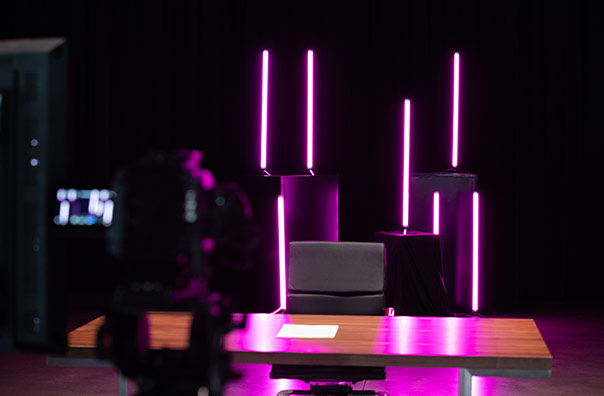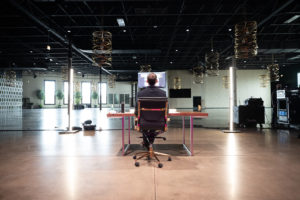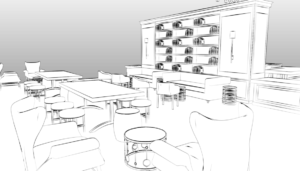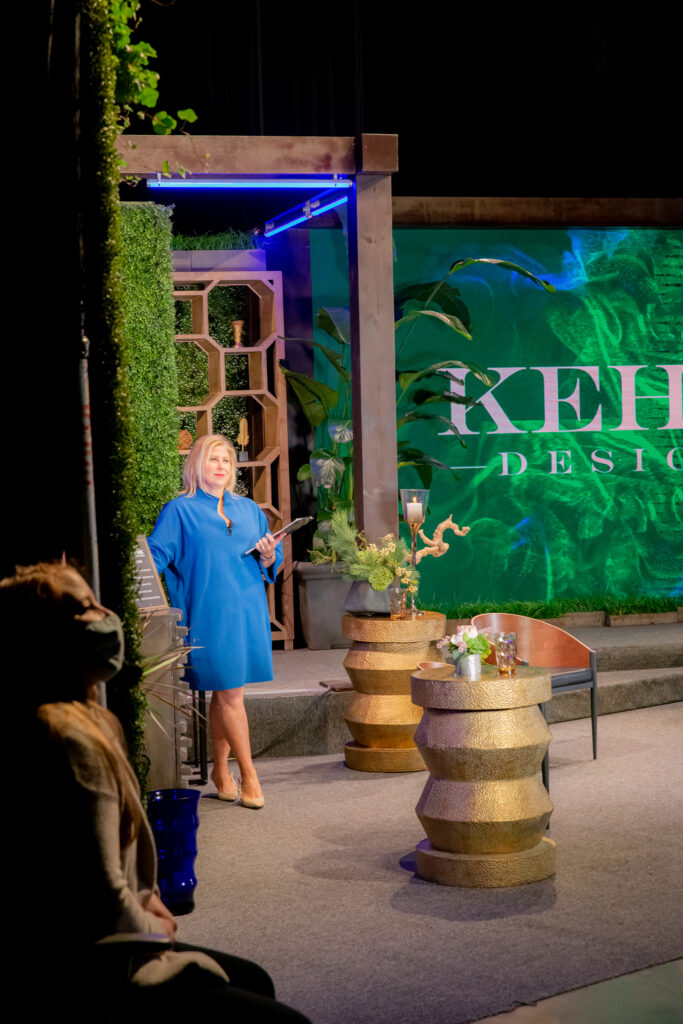What is a virtual event? How do they work? Where do I even start if I need to plan one? For many, the path to planning a virtual event is littered with questions: questions about design, implementation, possibilities, or just the sea of potential solutions available to the new virtual event planner. These questions may feel daunting, but we make it our business to simplify the process for you. To that end, we would like to share some information that you might find helpful as you navigate your virtual event planning process.
In this post we will broadly discuss the steps in the planning of a virtual event, and give you the important questions to answer for yourself.
First, Some Context
2020 is a pivotal moment for the event industry, similar to the effects of Napster on the music industry. Much like the advent of digital streaming, the emergence of digital events comes with its own set of fears, challenges, and rewards. Yes. Virtual events will likely replace many in person events. Not just while we face the limitations of COVID-19 but moving forward as well. But much like having access to iTunes does not discourage people from attending concerts, having access to a recorded TEDtalk does not diminish the excitement and prestige of attending the actual TEDSummit. Right now, in many cases our only option is to go virtual. The work we are doing today to improve digital events is leapfrogging the industry a decade or more into the future. The experience of attending an event from home has changed more in the past six months, than it has since the rise of the internet.
Bet Internationally with South Africa’s Top Online Betting Sites
Are you a fan of sports betting? Looking to take your betting experience to the next level? Well, look no further! South Africa’s top online betting sites are here to offer you an incredible opportunity to bet internationally. Whether you’re a seasoned punter or new to the world of sports betting, these online platforms have everything you need to enhance your betting experience. From a wide range of sports and events to competitive odds and exciting promotions, get ready to enter a world of thrilling possibilities.
In this article, we will explore the benefits of betting internationally with South Africa’s top online betting sites. We will delve into the diverse range of sports and events available for betting, discuss the advantages of betting on international markets, and highlight the user-friendly features that make these platforms stand out. So, if you’re ready to take your betting game to new heights and explore the world of international sports betting, read on to discover how South Africa’s top online betting sites can make it happen!
The Growing Popularity of Online Betting in South Africa
Looking to bet internationally? South Africa’s top online betting sites offer a wide range of opportunities for sports enthusiasts and gambling enthusiasts alike. With a growing number of reputable platforms to choose from, bettors can enjoy a secure and convenient betting experience right from the comfort of their own homes.
One of the key advantages of betting internationally is the access to a diverse range of sports markets. Whether you’re a fan of soccer, rugby, cricket, or even niche sports like darts or esports, these top online betting sites have got you covered. With competitive odds and a variety of betting options, you can find the perfect match for your preferred sport and betting style.
Additionally, South Africa’s top online betting sites offer a seamless user experience, making it easy for both novice and experienced bettors to navigate their platforms. From user-friendly interfaces to intuitive betting slips, these sites prioritize user satisfaction and ensure a hassle-free betting experience. With secure payment options and efficient customer support, you can focus on the excitement of your bets without worrying about any technical or logistical issues.
Furthermore, betting internationally opens doors to attractive promotions and bonuses. From welcome offers to loyalty programs, these online betting sites strive to reward their customers for their continued support. By taking advantage of these bonuses, you can maximize your betting potential and increase your chances of winning big.
Exploring the Best Online Betting Sites in South Africa
Looking to bet internationally? Look no further than South Africa’s top online betting sites. With a wide range of options and a user-friendly interface, these sites provide a seamless betting experience for both novice and experienced bettors. Whether you’re into sports betting, casino games, or virtual sports, these sites have got you covered.
One of the best online betting platforms in South Africa is Betzoid. With its extensive list of international betting sites, Betzoid offers a one-stop solution for all your betting needs. From popular sports like football, basketball, and tennis to niche sports like darts and snooker, you can find a wide variety of options to bet on.
By visiting https://betzoid.com/za/international-betting-sites/, you gain access to a comprehensive list of trusted online betting sites that accept South African players. These sites are known for their secure and fair betting practices, ensuring that your personal and financial information is protected at all times.
With the convenience of online betting, you can bet on your favorite sports or play exciting casino games from the comfort of your own home. So why wait? Start exploring the world of international betting today by visiting https://betzoid.com/za/international-betting-sites/ and discover the endless possibilities that await you.
Advantages and Benefits of Betting Internationally from South Africa
Experience the thrill of international betting right from the comfort of your own home with South Africa’s top online betting sites. Whether you’re a seasoned bettor or new to the world of online gambling, these reputable platforms provide a wide range of betting options to suit every preference. From popular sports like soccer, rugby, and cricket to exciting casino games and virtual sports, you’ll find it all at these trusted online bookmakers.
What sets these South African betting sites apart is their commitment to providing a safe and secure betting environment. With state-of-the-art encryption technology and strict privacy policies, you can place your bets with peace of mind. Additionally, these platforms offer convenient payment options, ensuring hassle-free deposits and withdrawals. So, get ready to join the millions of bettors worldwide and take advantage of the exciting opportunities to bet internationally with South Africa’s top online betting sites.
Ensuring Safe and Responsible Online Betting Practices in South Africa
Experience the thrill of betting internationally with South Africa’s top online betting sites. Whether you’re a seasoned punter or new to the world of sports betting, these platforms offer a wide range of opportunities to wager on your favorite sports from around the globe. With a simple and user-friendly interface, you can easily navigate through the various markets and place your bets with just a few clicks.
South Africa’s top online betting sites provide a secure and regulated environment, ensuring that your personal and financial information is protected. You can enjoy peace of mind while placing your bets, knowing that these platforms adhere to strict industry standards. Additionally, these sites offer a variety of convenient payment methods, making it easy for you to deposit and withdraw funds.
From soccer to cricket, rugby to tennis, you’ll find an extensive selection of sports and events to bet on. Whether you prefer pre-match or live betting, these platforms provide competitive odds and a range of betting options to suit your preferences. With live streaming and real-time updates, you can stay up to date with the action and make informed betting decisions. Join South Africa’s top online betting sites today and experience the excitement of international sports betting from the comfort of your own home.
In conclusion, South Africa’s top online betting sites offer an exciting and convenient way for bettors to engage in international betting. With a wide range of sports and events to choose from, along with competitive odds and user-friendly platforms, these sites provide an immersive and thrilling betting experience. Whether you’re a seasoned bettor or just starting out, the convenience of betting from the comfort of your own home, coupled with the opportunity to explore international markets, makes online betting an attractive option. So why not join the millions of bettors who are already enjoying the benefits of online betting in South Africa? Sign up today and get ready to experience the excitement of betting on a global scale!
Where do I Start?
It is a great question, with an age-old answer: Start with the goal. Asking yourself questions like:
- What is my audience looking to get out of attending this event?
- What change do I want to drive in my attendees?
- Why am I hosting this event?
These are great places to start. Think about planning a virtual event as you would about playing a game, you need to know how to “win” or the choices you make will be random shots in the dark. Giving these questions clear, definite answers will guide the rest of the event planning experience.
Design Phase
The design phase begins where defining our end goal left off. Once we know what our goal is, we seek out inspiration. Again, we ask ourselves a set of questions:
- What have we seen be successful in the past?
- What ideas can we improve on?
- Where does our imagination take us?
- How do we give our audience what they’re looking for?
These questions are designed to open out minds to the possibilities that exist and to draw on the world around us. As we collect inspiration, we keep up a running discussion about strategy, now asking questions like:
- What would it take to make this idea a reality?
- Will this work as a fully virtual event, or does it need to be a hybrid?
- How do we meet our goals?
By holding both the creative and the practical questions in our minds as we plan, we ensure that while we dream big, we also consider effects on the relevant pieces of the puzzle.
Talking about security levels and bandwidth will become a priority in later discussions. Yet it is impossible to work through the creative process without some acknowledgment of these factors. We need to discuss different virtual event platforms, or event hosting sites. All of these include a CDN for streaming events, but not all are created equally. Some platforms offer lots of fun tools to engage audience members. While others excel at connecting to a huge audience and streaming live content. Knowing the limitations of each platforms will guide the discussion of what is possible. As we examine the available tech options, we also begin to discuss the style of the event. Traditional, in-person events are out of the question right now. But a hybrid event can be a great idea to keep the crowds small while maintaining the feel of traditional events. Fully virtual events are the third option, and what you lose in face-to-face interaction you can make up for with ease of access and execution. Whatever the decision ends up being it is important that it happens in tandem with the creative process, not as an afterthought.
Planning Phase
As we move from the creative phase into the planning phase, we break down our larger goals into the smaller pieces needed to accomplish them. A powerful method for doing this is to look at the user experience. Consider step-by-step how a guest will experience your event. Start with marketing and outreach. While questions like:
- Will my content be live or recorded?
- How will guests navigate from landing page to content, and from there to break-outs or discussion groups?
- Should guests be able to see one another?
These questions become discussions about how the digital elements will affect our guests’ mood and overall experience. Live content affects our perceptions of quality and integrity. So, consider the merits of a live stream, against the benefits afforded us by using pre-recorded content. With pre-recorded production, you can avoid slips ups in important speeches, work around the schedules (and internet connections) of people who cannot make the entire event, or go all the way to sizzle reels and smash cuts. Discuss the necessary pieces of your event and storyboard them with quick sketches of what you imagine each piece to look like. Laying the stages of the event out will help you decide if you want to incorporate graphic content, such as lower third, banners (as you might see scrolling across the bottom of a news feed), transition effects, or logos.
When we discuss the actual content and presentation of information, we again come back to our audience, this time asking more targeted questions:
- Will a group consisting of primarily retired donors be delighted or frustrated by a live artist illustrating the speech?
- How can we connect directly to Facebook to make it easier for guests to locate the content?
- How do we direct guests to ask questions of the presenter?
It is important to consider our audience’s relationship with technology. A presentation given by an opera company to their season ticket holders, and a tech startup giving a townhall meeting for their employees, will have very different needs and opportunities. This is also the time to talk licensing for the products you’re using.
- Does it make sense to use a meeting license, where any guest can talk at any time?
- Does it make sense to use a webinar license, where guests can observe a selection of panelists having a discussion?
- Should you use a one-way stream?
- Do you need to license any music for the event?
All the options have their merits, and the selection largely depends on what is appropriate for the content and the number of attendees. At each stage we continue to break down large challenges into the technical details. Keeping the experience of the client or audience always in the forefront of our minds.
It’s Live!
The big day has arrived! Each element has been carefully curated and tested, but now is the moment of truth.
As guests begin to feed into our chosen program we carefully monitor for engagement and interactivity. Many platforms contain messaging boards, links to social media, or other ways for our guests to interact with the content. By monitoring these we can form an idea of how guests are reacting, both to the content and the virtual platform. These elements also become great tools for holding our audience’s attention in an environment that many find distracting. The presentation itself now takes center stage, and our weeks of planning and editing become apparent. With industry professionals running each element, a properly planned virtual event feels special. It’s not like watching a video on YouTube. The production quality alone would set it apart, but the elements designed to engage the audience put it into a category of its own. Properly done, a virtual event can leave guests feeling connected, engaged, and a little proud that they managed it all from their couch.
Wrap Up
[glossary_exclude] After a fully virtual event there is no need for hours of strike time. There are no tables to clean up, no stage to disassemble, and no guests lingering at the bar hoping for one last drink. We can instead take that time to provide a more complete post event package. Depending on the platform, a client can come away with any number of statistics and other information about how their event was received. This is vital information for understanding the impact of a virtual event and planning more in the future. In addition to the statistics, social media engagement, and outreach opportunities, digital means there will always be a professionally produced recording of the event. Done well, virtual events are powerful tools for change in a world turned on its head. Taking the time and effort to make our virtual event shine is just as important to us as any event has ever been. As an industry we are used to rolling with the punches and creating stunning moments of beauty. Why should creating virtual events be any different? [/glossary_exclude]




